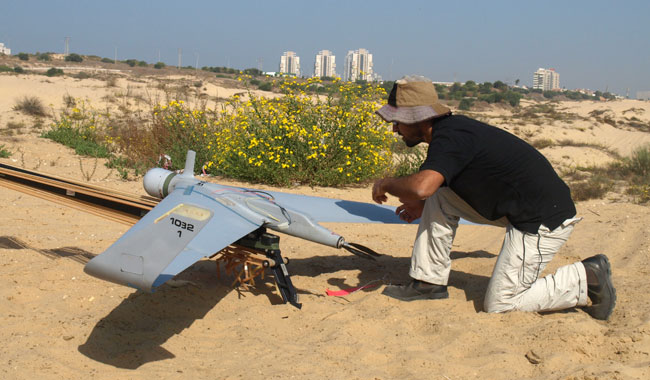

Aeronautics has completed the development of a new variant of its Orbiter 2 mini-UAS, implementing many lessons learned through extensive operational use of these drones, by more than 20 countries. In fact the B model is a new mini UAS packed into the airframe design of the Orbiter 2. Among the systems upgraded through this redesign are avionics, datalink, navigation and mission security. The drone can carry 1.5 kg (3.3 lbs) of payload, including the standard EO payloads used by the Orbiter 2 – among them the Controp STAMP series, including the dual-sensor M-STAMP, integrating day camera, IR camera and laser pointer. The introduction of digital datalink enables the use of additional payloads providing the Orbiter 2B a broader mission capability hitherto available only to larger Intelligence, Surveillance and Reconnaissance (ISR) assets. The air vehicle has a proven operational record in extreme weather conditions, through snow, rain and wind gusts up to 40 knots.
The digital datalink implemented in the new 2B replaces the previous analog communications link, offering improved security, and coverage of wider bandwidth, enabling maintaining several orbits in a given area. Digital communications also implements inherent encryption and frequency agility for improved communications security and more flexibility in overcoming interference.
Another security feature is the ability to designate the operating airspace for the Orbiter 2B’s navigation system, triggering an alert on any deviation from its designated patrol area or operating altitude. If the situation continues, the drone enters the self-destruct mode, destroying the ‘brain’ and data from the avionics, payloads and memory, thus eliminating the enemy extracting information the wreck.
An important aspect of the new upgrade is improved non-GPS navigation. In fact, the Orbiter 2B can perform its mission without GPS and without datalink, what makes the system far more resilient in case of electronic jamming and GPS spoofing which are becoming common in the modern battlefield.
Unlike many mini-UAS that require stationary or dismounted elements for ground control, the Orbiter 2B can be controlled and monitored from moving vehicles, thus adapting well for providing overwatch on security and escort missions, as well as supporting precision strikes pursuing dynamic targets.
The new system are also compatible with industry standards, including STANAG 4586 (NATO) for UAS controls and H.246 for the video streaming delivered by the drone, which enable better integration with other systems operated by users or supported forces.




















